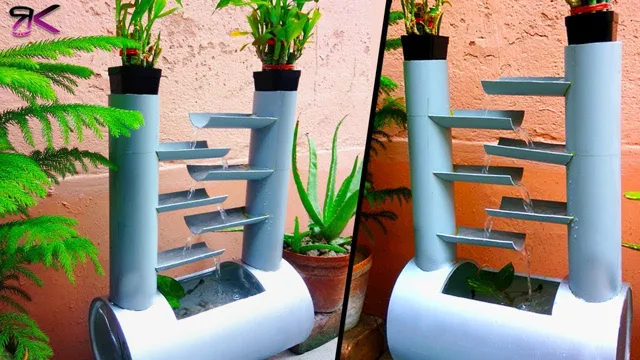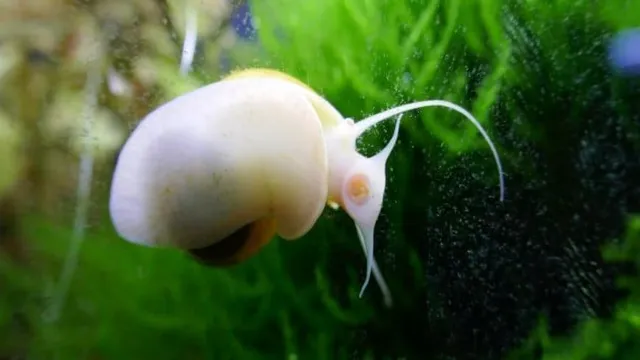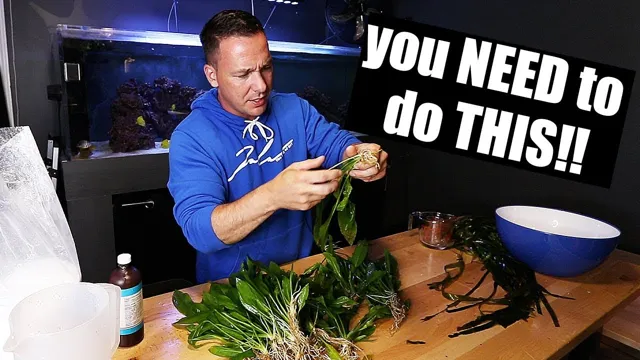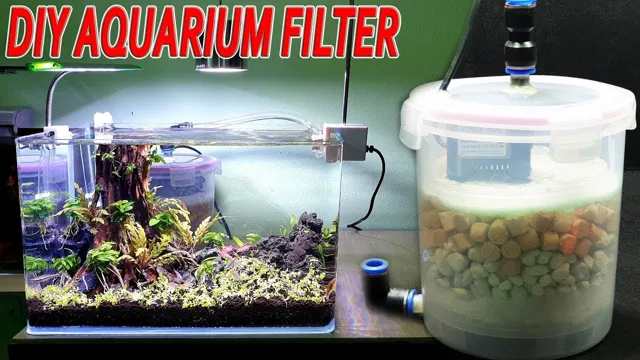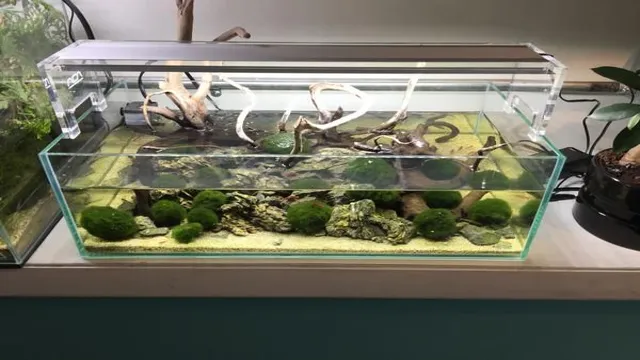Are you looking to add some aquatic life to your home or office? Building your own aquarium may be easier than you think, especially with PVC piping. PVC pipes are a great material for aquarium construction due to their durability, cost-effectiveness, and versatility. Creating an aquarium with PVC pipes not only gives you control over the size and shape of your tank but also allows for easy customization of filtration systems and lighting.
It’s a fairly simple process that can be accomplished with some basic tools and supplies. In this blog, we will guide you through the steps to make your own aquarium with PVC pipes. From choosing the right size and type of pipe to assembling the tank and adding in your desired accessories, we’ve got you covered.
By the end of this post, you’ll have all the information you need to create a beautiful and unique aquarium that will impress anyone who sees it. Let’s dive in!
Gather Materials
If you’re looking for a budget-friendly way to create an aquarium, utilizing PVC pipe is a great option. The first step is to gather all the materials you’ll need, which includes PVC pipes, connectors, a glass tank, and silicone sealant. Choose the PVC pipe size that’s appropriate for the size of your tank, typically ranging from 1/2 inch to 1 1/2 inches in diameter.
You’ll also need connectors like elbows, T-joints, and end caps to create different shapes and angles for your aquarium design. The glass tank should be sturdy enough to hold water and allow for proper filtration. Once you have all your materials, you’re ready to start building your DIY aquarium.
PVC Pipe
If you’re planning on starting a project that requires PVC pipe, the first step is gathering the necessary materials. Apart from the PVC pipe itself, you will also need fittings, glue, and a saw to cut the pipe to size. PVC pipes can be found at most hardware or home improvement stores, and it’s important to choose the right size for your project.
PVC pipes come in various sizes measured by their diameter, which ranges from ½ inch to 12 inches. When purchasing fittings, make sure that they are compatible with the size of the PVC pipe you have selected. PVC pipe projects often require the use of glue, so it’s important to choose a cement that is appropriate for your project.
Once you have gathered all your materials, you’re ready to start your PVC pipe project. With the right materials and a little bit of creativity, the possibilities for using PVC pipe are endless, making it a popular choice for various DIY projects.

PVC Elbows and Couplings
Before starting your PVC elbow and coupling project, it’s important to gather all the necessary materials. First and foremost, you’ll need PVC piping in the appropriate diameter for your project. You’ll also need PVC elbows and couplings specific to that diameter to connect the piping at the desired angles.
Don’t forget to grab a PVC cement designed for use with your specific type of piping. This will help ensure a proper and secure fit. Additionally, you may want to consider picking up a PVC cutter to make precise cuts in the piping.
And finally, make sure you have all the necessary safety equipment, such as safety glasses and gloves, to protect yourself during the project. By gathering all the materials beforehand, you’ll be able to work efficiently and safely.
Epoxy Glue
When it comes to epoxy glue, it’s important to gather all the necessary materials before you start your project. First, you’ll need the epoxy glue itself, which can usually be found at any hardware or craft store. Make sure to choose the appropriate type of epoxy glue for your specific project, as there are different types for different materials.
You’ll also need gloves to protect your skin, as epoxy can be harmful if it comes into contact with your skin. A mixing container and stir stick will be necessary to combine the two parts of the epoxy, so make sure to have these on hand. Finally, be sure to read the instructions and safety precautions carefully before beginning your project.
By properly gathering all the materials you need, you can ensure that your epoxy glue project is safe and successful.
Acrylic Sheet
Acrylic sheet When it comes to working with acrylic sheets, there are a few materials you’ll need to gather beforehand. First and foremost, you’ll need the acrylic sheet itself! You can purchase this material from a variety of suppliers, either in-store or online depending on your preference. From there, you should have a set of cutting tools on hand such as a cutting knife, a saw, or even a laser cutter if you have access to one.
Sandpaper or a polishing cloth can also be useful for smoothing out the edges of your cuts. Additionally, if you plan on gluing the acrylic sheet to another surface, you’ll want to have a suitable adhesive ready to go. While working with acrylic sheet may seem daunting at first, as long as you have the right materials and a bit of patience, you’ll be well on your way to creating something truly beautiful.
Saw
When it comes to sawing, having the right materials is key. First and foremost, you’ll need a saw blade. There are different types of blades, suited for different materials and cuts.
For example, rip-cut blades are designed for cutting along the grain of the wood, while crosscut blades are used for cutting across the grain. You’ll also need a saw handle or frame to hold the blade in place and give you a good grip. Another important component is the saw file, which is used to keep the blade sharp.
Different types of files are used for different blade materials and tooth shapes. Finally, you may want to consider using saw guides or miter boxes to help you make precise cuts at specific angles. Overall, gathering the right materials and having a bit of know-how about which blade to choose and how to keep it sharp will go a long way towards making your sawing projects a success.
Drill
Drill If you’re planning on drilling, whether it be for construction, DIY projects, or just basic household maintenance, it’s important to gather the right materials before diving in. A drill bit is the most important piece of the puzzle when it comes to drilling, and it’s crucial to choose the right one based on the material you’re drilling into. High-speed steel bits work well for softer materials like wood and plastic, while cobalt bits are better suited for harder materials like metal.
It’s also important to have safety equipment on hand, such as safety glasses and gloves, to protect yourself from any potential accidents. In addition to these essentials, it’s a good idea to have a stable work surface, a power drill, and a measuring tool for accurate placement. By gathering all the necessary materials beforehand, you’ll be able to tackle your drilling project with ease and efficiency. (See Also: How to Get an Aquarium from Tanked: A Step-by-Step Guide to Your Dream Tank)
Design Aquarium Shape
If you’re looking to make an aquarium with PVC pipe, the first step is to design the shape of your tank. PVC pipe is an excellent material for building aquarium frames because it’s durable, strong, and resistant to rust and corrosion. You can use PVC pipe to create a variety of shapes, including rectangles, cubes, and cylinders.
When designing your aquarium, it’s essential to consider the needs of the fish you plan to keep. Some fish prefer a long, narrow tank, while others need plenty of vertical space. Once you’ve determined the shape of your tank, you can begin cutting and fitting the pieces of PVC pipe together.
Be sure to use a strong adhesive like PVC cement, and allow plenty of time for the glue to dry before adding water or fish. With a little creativity and some careful planning, you can build a beautiful and functional aquarium using PVC pipe as your frame.
Sketch the Design
When designing an aquarium, the shape is a crucial component to consider. It not only plays an aesthetic role but also determines the type of fish and plants that can thrive in the environment it creates. Before sketching out the aquarium design, it is important to research the type of aquatic life you wish to keep and their habitat requirements.
A tall, narrow tank would be suitable for angelfish, while a wider, shallow tank may be better for cichlids. The shape can also be used to create different areas with varying water flow and depth, providing a diverse environment for the inhabitants. Additionally, different shapes can be used to create a specific theme or emulate a natural environment, such as designing a tank shaped like a mountain for a freshwater stream environment.
By determining the shape of the aquarium, you are laying the foundation for creating a healthy and thriving aquatic ecosystem for your fish and plants.
Measure PVC Pipe and Cut
If you’re planning to build an aquarium out of PVC pipes, the first step is to design the shape of your aquarium. You can choose any shape you want, but keep in mind that the more complex the shape, the more complicated it will be to build. Once you’ve decided on the shape, it’s time to measure and cut the PVC pipes to the right length.
Start by measuring the height, width, and depth of your aquarium, and then calculate the length of the PVC pipes needed for each section. When cutting the pipes, use a saw or cutter to ensure a clean, straight cut. Make sure to wear protective gear like gloves and safety glasses to avoid injury while cutting.
Remember to double-check your measurements before cutting, as mistakes can be costly and may require you to start over. With careful planning and precise cutting, you’ll have the perfect PVC pipe aquarium in no time!
Connect PVC Pipe with Elbows and Couplings
When it comes to creating a unique aquarium shape, using PVC pipe with elbows and couplings are essential. PVC pipes are a great material to work with because they are easy to cut and manipulate, which means you can create just about any shape you want. To get started, think about the size and shape of your aquarium.
Do you want a square, rectangular, or circular shape? Once you have determined the overall shape, you can begin to create the internal structure of the aquarium using PVC pipes. This is where the elbows and couplings come in handy. These fittings allow you to connect the pipes together at different angles, which means you can create more intricate and complex shapes.
When designing your aquarium shape, it’s important to consider the types of fish and plants you plan to keep. Some fish need more space to swim, while others prefer a variety of hiding spots and caves. By designing your aquarium with these factors in mind, you can create a unique and functional environment that is perfect for your aquatic friends.
So, next time you’re looking to design a custom aquarium, remember to use PVC pipes, elbows, and couplings to bring your vision to life.
Attach Acrylic Sheet
Making an aquarium with PVC pipes is a fun project that allows you to create a custom fish tank to fit your space and budget. One of the essential steps in building an aquarium is attaching the acrylic sheet to the PVC frame. To do this, first, clean the sheet with soap and water, then dry it thoroughly.
Apply a thin layer of PVC cement to the PVC pipe frame using a brush or applicator. Then, carefully place the acrylic sheet onto the frame, ensuring that it lines up correctly. Apply pressure for a few minutes to allow the cement to bond the sheet to the frame properly.
Finally, let it dry for at least 24 hours before filling the tank with water and adding your fish. By following these steps, you can have a custom-made aquarium that looks professional and functions great.
Cut Acrylic Sheet to Fit
When it comes to attaching an acrylic sheet, one of the first steps is to cut the sheet to fit the desired size and shape. It’s important to use the right tools and techniques to ensure a clean and precise cut. One option is to use a circular saw with a fine-toothed blade, which can provide a smooth edge without causing the sheet to crack or become damaged.
Alternatively, a jigsaw or handsaw may also be used. Once the sheet has been cut to size, it’s important to consider the best method for attaching it to its intended surface. Options may include using screws, adhesive, or clips, depending on the specific project and the type of surface being used.
Whatever method is chosen, it’s important to ensure that the acrylic sheet is securely attached and level, in order to ensure the best possible result. Overall, with the right tools and techniques, attaching an acrylic sheet can be a straightforward and effective process.
Drill Holes for PVC Pipe
If you are planning to create an aquarium or any indoor water feature, attaching an acrylic sheet may be a necessity. The material is highly durable and ensures that water stays contained without leaking from the sides. To attach the acrylic sheet, the first step is to drill holes for the PVC pipe. (See Also: How to Get Rid of Fish Smell in Aquarium Store: Effective Ways to Eliminate Odors)
PVC pipes are necessary for proper water flow, and drilling the correct size holes is crucial for a secure and long-lasting bond. It’s important to measure and mark the location of the holes before drilling, so you have a guide for where to drill. Use a drill bit that is slightly larger than the diameter of your PVC pipe to ensure a proper fit, and drill the holes one at a time, taking care to hold the drill straight to prevent any slippage.
A properly drilled hole will allow the PVC pipe to slide in snugly, creating a secure and sealed connection between the acrylic sheet and the PVC pipe. With a little bit of patience and care, you can attach an acrylic sheet to your water feature and enjoy it for years to come.
Epoxy Glue Acrylic Sheet to PVC Pipe
Epoxy glue is a great way to attach an acrylic sheet to a PVC pipe. To begin, it’s important to choose the right type of epoxy glue for the job. Make sure the epoxy glue is rated for use on PVC and acrylic material.
Once you have the right glue, clean the surfaces to be bonded thoroughly. Sand the PVC pipe and wipe away any dust with a clean towel. Clean the acrylic sheet with soap and water and dry it completely.
Then, apply the epoxy glue to the PVC pipe and place the acrylic sheet onto the glue. Hold the acrylic sheet in place until the glue dries, which can take several hours. Once the glue has dried, your acrylic sheet will be securely attached to the PVC pipe.
This method is great for creating custom aquariums or other plastic projects.
Create Aquarium Accessories
Creating aquarium accessories with PVC pipe is an easy DIY project that can be completed in a few simple steps. First, gather the necessary materials including PVC pipes, PVC cement, and a saw or cutter to cut the pipes to size. Once you have your materials, start by measuring and cutting the PVC pipes to the desired length and shape.
Next, use the PVC cement to glue the pieces together to create your accessory. Some ideas for aquarium accessories made from PVC pipes include tunnels, hiding places, and water flow dividers. Don’t forget to rinse your new accessory thoroughly before adding it to your aquarium to avoid any residues left from the PVC cement.
Overall, making aquarium accessories with PVC pipe is a fun and affordable way to enhance your underwater world while also flexing your DIY skills.
PVC Plant Holders
If you’re looking for a fun and creative way to spruce up your aquarium, PVC plant holders might be just what you need. These simple holders are made from PVC pipes, which can be cut and shaped to fit any size or shape of plant. Not only do they add an interesting visual element to your aquarium, but they also provide a useful function by keeping your plants in place and preventing them from floating away.
Plus, designing and making your own PVC plant holders is a great DIY project that is easy and affordable. Whether you’re a seasoned aquarium enthusiast or a new hobbyist, PVC plant holders are a great addition to any tank. So, why not give it a try and see how they can improve the look and health of your aquatic plants?
PVC Hideouts for Fish
PVC Hideouts for Fish If you’re looking to spice up your aquarium with some new accessories, consider creating PVC hideouts for your fish! PVC pipes are a cost-effective and versatile material that can be transformed into various shapes and sizes, making it an excellent choice for aquarium decorations. PVC pipes are also non-toxic and won’t harm your fish. You can easily cut the PVC pipes into different lengths and arrange them in various shapes to create an interesting hiding place for your fish.
Adding PVC hideouts to your aquarium not only creates a safe and comfortable environment for your fish but also brings a unique touch to the overall aquarium decor. Additionally, you can combine PVC hideouts with live or artificial plants to create a more natural look and feel. Try it out today, and watch your fish enjoy their new hideouts!
PVC Bridges for Fish Swims
Creating PVC bridges for fish swims is a great way to add some excitement to your aquarium. Not only do these bridges provide a unique look to your tank, but they also offer a fun and functional place for your fish to swim and play. The best part? These bridges are easy to make and can be customized to fit your specific tank size and style.
Start by gathering PVC pipes and connectors in the appropriate sizes, then cut them to your desired length and assemble the bridge using the connectors. You can also add decorations and plants to make your bridge look like a natural part of the tank. PVC bridges can be a great addition to any aquarium setup, and are sure to keep your fish entertained and happy.
So why not give it a try and see the difference it makes in your tank?
Maintenance Tips for PVC Aquarium
If you want to create an aquarium with PVC pipe, there are a few things you should know to maintain it properly. Firstly, make sure you clean it thoroughly on a regular basis to avoid the build-up of algae and other harmful bacteria. You can do this by using a specialized aquarium cleaner or simply scrubbing it with a soft brush and warm water.
Be sure to change the water frequently to keep it fresh and remove any waste that may accumulate. Installing a filter will also help to keep the water clean and clear, while adding activated carbon to the filter will help to absorb impurities and reduce odors. Another important maintenance tip is to keep an eye out for any cracks or leaks in the PVC pipe.
These can be caused by a variety of factors such as age, wear and tear or accidental damage. If you notice any issues, be sure to repair them promptly to avoid further damage to your aquarium and its inhabitants. With a little care and attention, your PVC aquarium can provide a beautiful and relaxing addition to your home. (See Also: How to Clean an Aquarium with Hard Water Stains: Tips and Tricks)
Recirculating Pump for Water Flow
If you’re maintaining an aquarium, you know how important it is to ensure proper water flow. One handy tool for this is a recirculating pump, which keeps water moving and helps maintain temperature and oxygen levels for your aquatic friends. To ensure your PVC aquarium stays in great shape, there are a few tips to keep in mind when maintaining your recirculating pump.
Firstly, make sure to clean the pump regularly, removing any debris or buildup that could cause clogs or damage. Additionally, keep an eye out for any signs of wear and tear, such as rust or corrosion, and replace parts as needed. Finally, be sure to follow manufacturer’s instructions for installation and maintenance to ensure your pump operates safely and effectively.
With the right care and attention, a recirculating pump can be a valuable addition to your aquarium maintenance routine, keeping your fish happy and healthy for years to come.
Cleaning the Aquarium
Cleaning your PVC aquarium is essential to keep your fish and other aquatic creatures healthy. First, ensure that you have all the necessary tools, such as a siphon, net, and algae scraper. Begin by siphoning out 20-30% of the water, being careful not to disturb the substrate too much.
Remove any decorations and plants and scrub them down to get rid of any algae or debris. At the same time, use the algae scraper to clean the glass walls carefully, avoiding scratches. Once you have removed most of the debris, refill the tank with treated tap water and add an aquarium-safe conditioner to remove any residual chlorine.
Additionally, test the water parameters regularly to ensure that the levels are within a healthy range for your aquatic pets. By following these steps regularly, you can maintain a healthy and thriving aquatic environment for your PVC aquarium and its inhabitants.
Checking for Leaks
When it comes to maintaining your PVC aquarium, one important task is checking for leaks. Even the smallest leak can cause damage to your fish tank and put your aquatic pets at risk. To check for leaks, start by inspecting the seams and joints of your aquarium.
Look for signs of water seepage or drips. You can also fill your tank with water and let it sit for a day, checking for any drop in water level. Another way to detect leaks is by using colored food dye.
Simply add a few drops to your aquarium water and watch for any seepage. Regularly checking for leaks can prevent costly repairs and help keep your aquarium in top shape.
Conclusion
In conclusion, making an aquarium with PVC pipe not only offers a unique and stunning display for your aquatic friends, but it also allows for customization and creativity in design. With some basic tools and a little bit of know-how, you can create a tank that is truly one-of-a-kind. So, why settle for a bland and ordinary aquarium when you can make a splash with PVC? Dive in and let your imagination run wild!”
FAQs
What materials do I need to make an aquarium with PVC pipe?
To make an aquarium with PVC pipe, you will need PVC pipes, aquarium silicone sealant, a saw, a ruler, and a marker.
How do I determine the size of the PVC pipe to use for my aquarium?
The size of the PVC pipe you use for your aquarium depends on the size of your tank. As a general rule, use pipes with a diameter of one inch or more for tanks up to 55 gallons. For bigger tanks, use pipes with a diameter of at least two inches.
Can I use PVC cement instead of silicone sealant to make my aquarium?
No, PVC cement should not be used to make an aquarium as it contains harmful chemicals that can be dangerous for aquatic life. Use aquarium silicone sealant instead.
Do I need to drill holes in the PVC pipe to allow for water flow?
Yes, you will need to drill holes in the PVC pipe to allow for proper water flow. Make sure to space the holes evenly and keep them at a consistent size.
How long does it take for the silicone sealant to dry before I can add water to my aquarium?
The drying time for silicone sealant can vary depending on the brand and type, so it is important to follow the manufacturer’s instructions. In general, it takes 24-48 hours for the sealant to fully cure before adding water to the tank.
Can I paint the PVC pipe to match my aquarium decor?
Yes, you can paint the PVC pipe to match your aquarium decor. However, make sure to use aquarium-safe paint and let it fully dry before installing the pipes in your tank.
How do I install the PVC pipe in my aquarium?
To install the PVC pipe in your aquarium, first, measure and cut the pipes to the desired lengths. Then, use aquarium-safe silicone sealant to glue the pipes together and to attach them to the tank walls or other decorations. Allow the sealant to fully cure before adding water and fish to the tank.

